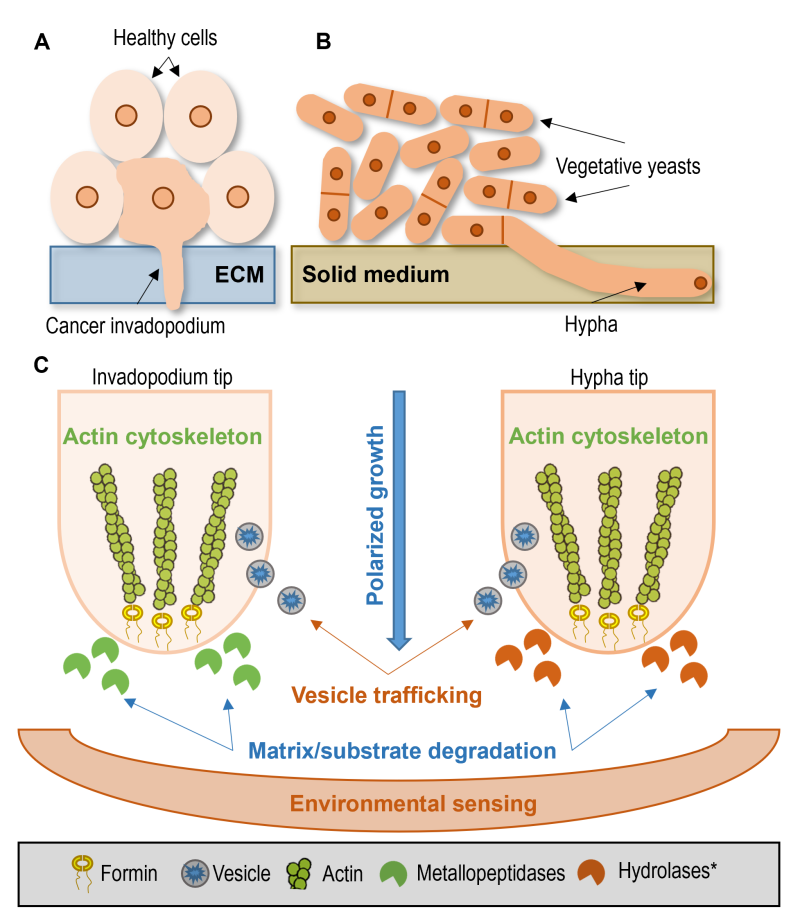Back to article: Understanding the molecular mechanisms of human diseases: the benefits of fission yeasts
FIGURE 3: Common features of tumor invadopodia and hyphal growth. (A) Tumor invadopodium invades the extracellular matrix (ECM) among healthy cells. (B) Extension of invasive hypha of the fission yeast S. japonicus in the solid medium among normal vegetative yeast cells. (C) Common features enable a direct comparison between cancer invadopodia (left side) and the fungal hyphae (right side). Polarized growth: both fungal hyphae and invadopodia grow in a polarized way. Actin cytoskeleton: the polarized growth is primarily driven by actin polymerization, and it needs changes in the cytoskeletal structure. Vesicle trafficking: invadopodia formation or hyphae growth is unimaginable without vesicle transport. Matrix/substrate degradation: to continue expansion and acquire nutrition, both the invadopodia and the hyphae need to release enzymes that degrade their surrounding environment. Environmental sensing: signals from the environment have a substantial impact on the behavior of cells. Invadopodia formation and yeast-to-hyphae transition are affected by environmental factors like nutrient availability, pH, temperature, or CO2. *Although transcriptome analysis of the hyphae of S. japonicus suggested that several coding genes responsible for the production of vacuolar hydrolases were upregulated during hyphal extension [159], further studies are required to assess the extent of substrate degradation in S. japonicus.

